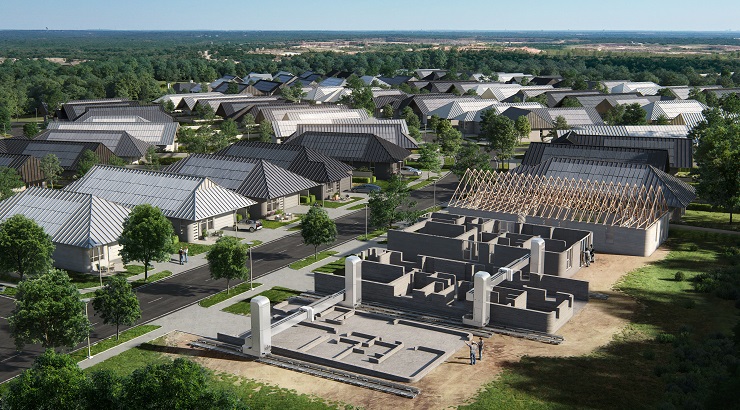Residential Projects
Icon’s 3D-Printed Village in Texas Set for Completion
Icon has printed 95 units in its Wolf Ranch village near Austin, Texas.

American 3D concrete-printing company, Icon, has printed 95 houses in its Wolf Ranch village near Austin, Texas, US, with five more units coming up next year.
Using their gantry-style Vulcan 3D-printing robot, Icon – in partnership with American homebuilder Lennar – has concrete-printed the houses, aiming to revolutionise home construction in the states.
“We’ve completed [printing for] 95 homes,” Icon’s VP of construction, Spencer Padgett, stated in May, adding that he expects the village to be ready next year.
“We have some of the lots taken up by our logistics and parking areas, so there’s three lots that are available and another two lots, which we will do next year.”
The project’s goal, Padgett said, is to offer competitive prices for single-family homes by saving in construction timelines and materials.
RELATED: 7 of the World’s Most Famous 3D Printed Homes
The Icon 3D printed homes were co-designed by Icon and Bjarke Ingels Group.
Ranging from around 1,850 sq. ft. (172m2), a unit starts at $430,000.
The Vulcan 3D-printing robot can print houses up to 3,000 sq. ft. (279m2) within its nearly 16-ft (4.9m) by 47-ft (14m) frame.
According to Padgett, the structures are designed to be more climate resistant – using less organic materials than traditional buildings – and energy efficient.
“We got a utility bill from one of the customers there from last week. For a 1,850 sq. ft. house, [the energy bill was] $35 for the entire month,” he said.
The houses also meet some of America’s highest standards for wind resistance, with the ability to endure windstorms up to 402km/hr.
Phoenix 3D-printer
In March, Icon unveiled a 40-foot, second-story crane-style 3D-printer named Phoenix, aiming to enhance its ability to meet more customer needs.
RELATED: 3D Printing Technology for Construction
Padgett believes the new printer, which is designed to be set up quickly and “very deployable or manoeuvrable on the job site,” will meet the demand for robotic concrete homebuilding, a budding industry in the US.
Phoenix 3D-printer can print walls up to 27-ft tall, and can do foundation and ground-level work, as well.
“It allows us to go down and print a foundation, allows us to print the couple floors above, and even print roof structures for some of the homes,” Padgett said.














